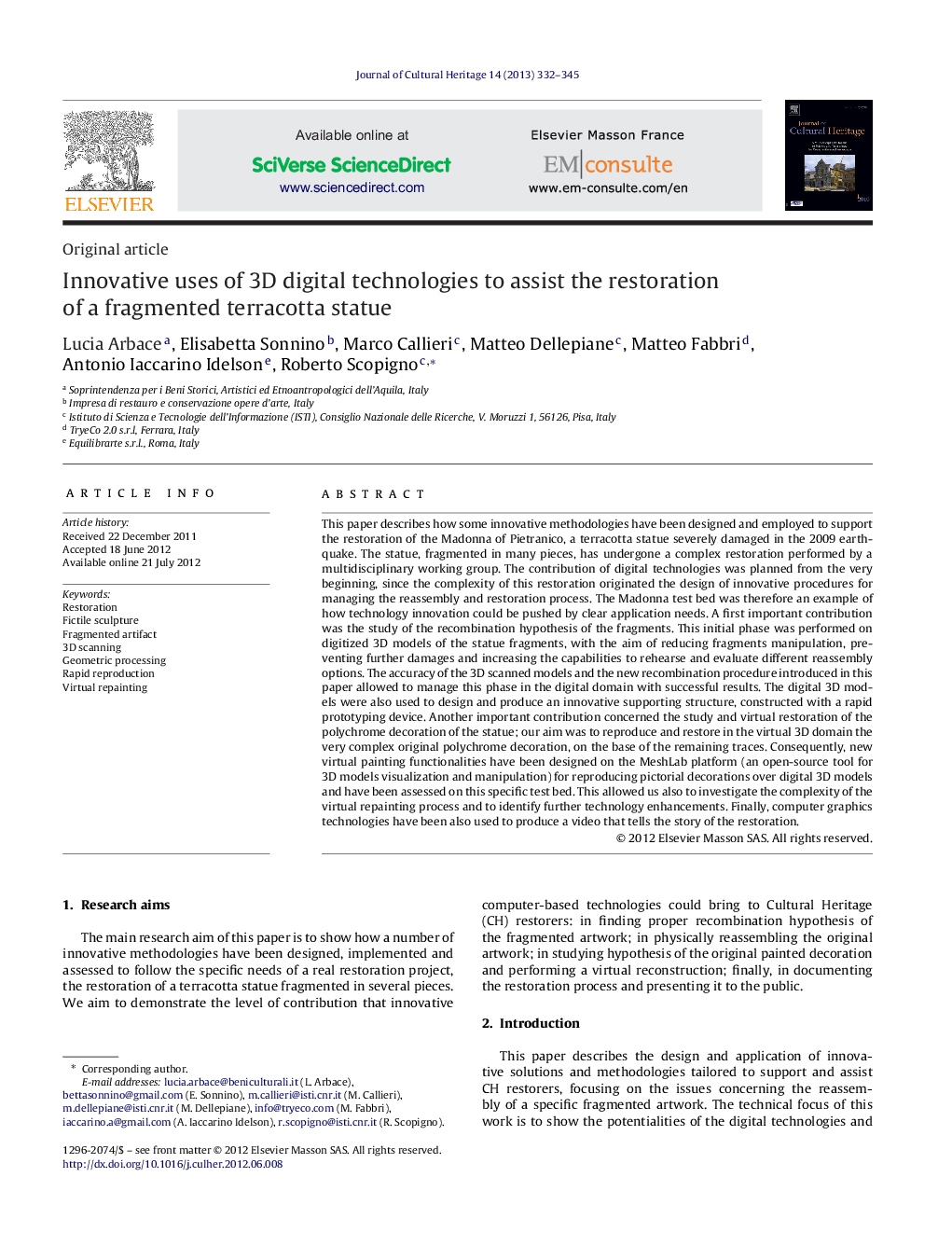| Article ID | Journal | Published Year | Pages | File Type |
|---|---|---|---|---|
| 1038192 | Journal of Cultural Heritage | 2013 | 14 Pages |
This paper describes how some innovative methodologies have been designed and employed to support the restoration of the Madonna of Pietranico, a terracotta statue severely damaged in the 2009 earthquake. The statue, fragmented in many pieces, has undergone a complex restoration performed by a multidisciplinary working group. The contribution of digital technologies was planned from the very beginning, since the complexity of this restoration originated the design of innovative procedures for managing the reassembly and restoration process. The Madonna test bed was therefore an example of how technology innovation could be pushed by clear application needs. A first important contribution was the study of the recombination hypothesis of the fragments. This initial phase was performed on digitized 3D models of the statue fragments, with the aim of reducing fragments manipulation, preventing further damages and increasing the capabilities to rehearse and evaluate different reassembly options. The accuracy of the 3D scanned models and the new recombination procedure introduced in this paper allowed to manage this phase in the digital domain with successful results. The digital 3D models were also used to design and produce an innovative supporting structure, constructed with a rapid prototyping device. Another important contribution concerned the study and virtual restoration of the polychrome decoration of the statue; our aim was to reproduce and restore in the virtual 3D domain the very complex original polychrome decoration, on the base of the remaining traces. Consequently, new virtual painting functionalities have been designed on the MeshLab platform (an open-source tool for 3D models visualization and manipulation) for reproducing pictorial decorations over digital 3D models and have been assessed on this specific test bed. This allowed us also to investigate the complexity of the virtual repainting process and to identify further technology enhancements. Finally, computer graphics technologies have been also used to produce a video that tells the story of the restoration.
